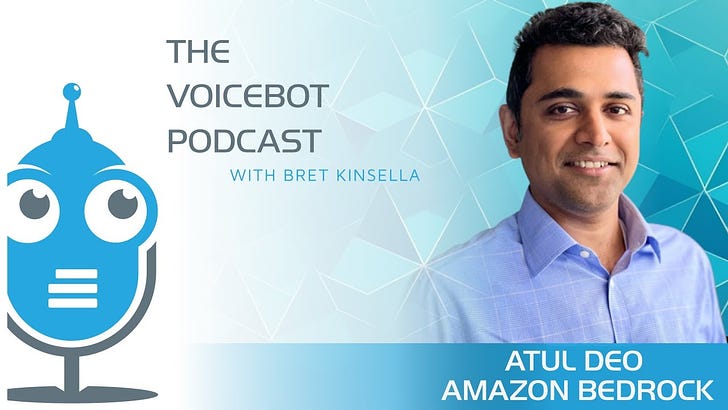Titan LLM, Amazon Bedrock Use Cases, and Generative AI Tech Breakdown with Sherry Marcus
Embeddings, choice, and customization are on the AWS generative AI menu
Sherry Marcus is the director of applied science for Amazon Bedrock, the generative AI service offered by AWS. Among her responsibilities is Amazon’s Titan Large Language Model (LLM).
A core part of the discussion captured in the video above relates to the Titan embeddings model, which became generally available in late September. This solution combines the Tital LLM with a vector database to improve knowledgebase searches. In October, Marcus offered a behind-the-scenes perspective on these products and others at the Synthedia 4 LLM Innovation conference.
“I think this is going to substantially change how businesses work,” said Marcus. “Typically, a lot of people’s time, in all industries, is spent more on gathering information than actually thinking about it and producing new content.”
Customization and Flexibility
A key topic stressed by Marcus was Amazon Bedrock’s approach to providing companies with needed flexibility and customization. AWS offers access to first-party (1p) and third-party (3p) foundation models and has its own model portfolio to maximize choice. Bedrock also offers no-code agents to facilitate integration with other company systems and databases.
We believe that there is no one model to rule them all. We believe that different large language models or image models are applicable to specific situations. So, Bedrock has Gen AI applications with both 1p, which are the Titan models built by Amazon AWS, as well as as 3p models, built by other providers such as Anthropic, Stability AI, Meta and many others…
When a customer has a problem…chances are the customer is going to need to access their own database to satisfy the customer transaction. And to do so we've developed agents for Bedrock which allow customers a codeless way to implement backed by Bedrock LLMs for specific objectives.
Cloud First vs LLM First
Amazon is betting that companies will approach their generative AI needs with a cloud-first orientation and not LLM-first. While the LLM products have received a lot of attention to date, the performance differences between OpenAI’s GPT-4, Anthropic’s Claude, Meta’s Llama 2, and others have been shrinking. If most models perform comparably or several surpass the required thresholds, then convenience and cost may become the primary decision criteria.
This is a key element of Amazon’s “all-of-the-above” strategy for AI foundation models. Provide choice and flexibility. However, instead of just offering third-party models, the company has invested in its own models to provide more customization for customers.
AI Evolution
Marcus provides an interesting perspective on how the generative AI market is evolving and where it has come from. She previously ran an AI business that was a large government contractor, worked in the intelligence community, and oversaw AI labs at leading financial institutions. According to Marcus, 2019 was an inflection point. The advent of attention mechanisms combined with parallel processing transformed the industry.
AWS is building on those innovations by servicing the new demand based on Amazon’s famous customer obsession orientation, while others focus on pitching the merits of their latest product iterations. This seems like a reasonable strategy. AI customization will be a key trend in 2024 and many models already surpass the requirements for a variety of business use cases.
Amazon Reshuffles LLM Ecosystems with an [up to] $4B Investment in Anthropic
Amazon will invest up to $4 billion in Anthropic and have a minority ownership position in the company. Anthropic and Amazon announced a new partnership today that includes the former committing to running its primary training and inference workloads on AWS, and the latter investing “up to $4 billion,” for a minority stake in the company. There is a lot …




![Amazon Reshuffles LLM Ecosystems with an [up to] $4B Investment in Anthropic](https://substackcdn.com/image/fetch/$s_!MyW6!,w_1300,h_650,c_fill,f_auto,q_auto:good,fl_progressive:steep,g_auto/https%3A%2F%2Fsubstack-post-media.s3.amazonaws.com%2Fpublic%2Fimages%2Fee28339c-609f-42e9-8986-b05928518712_1920x1080.jpeg)